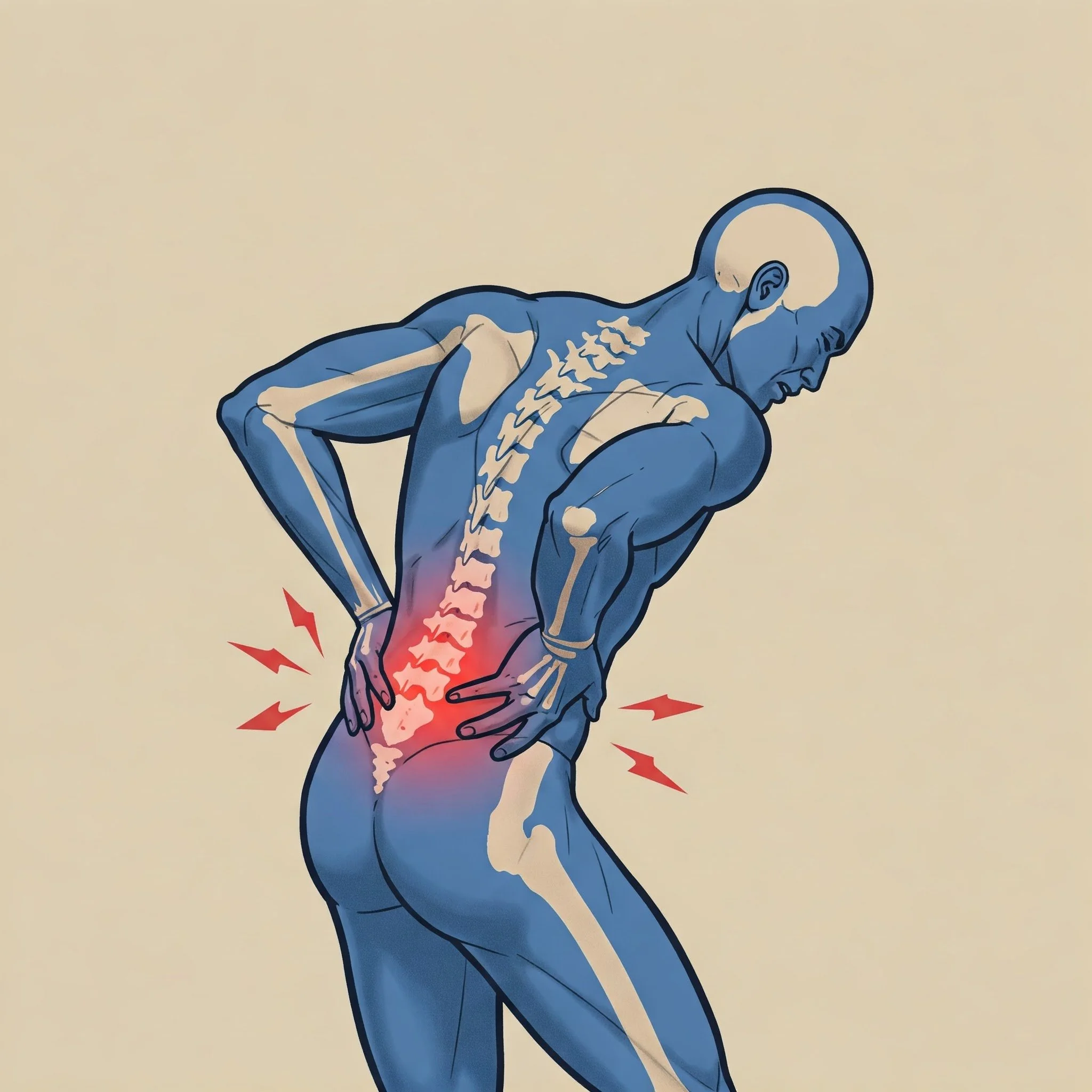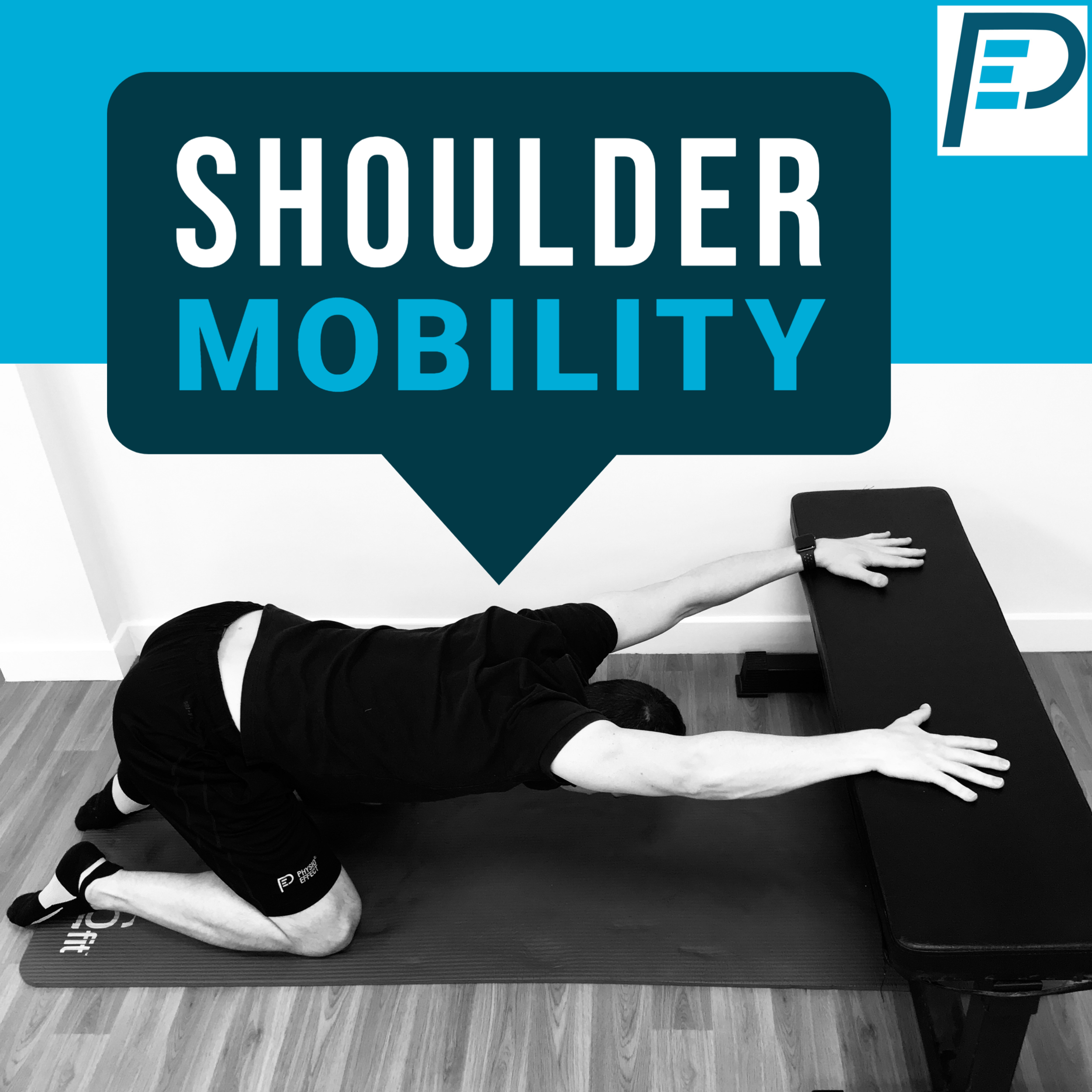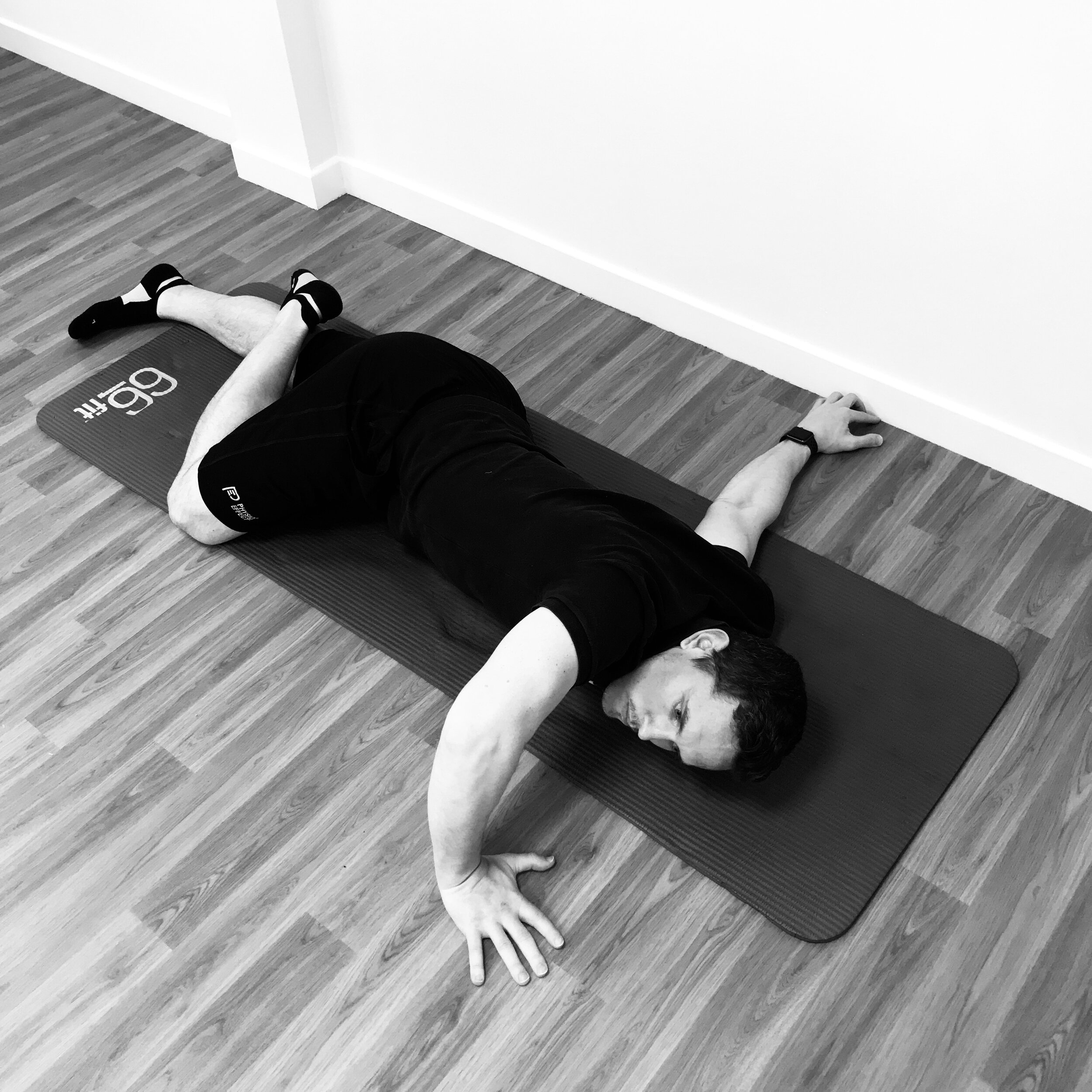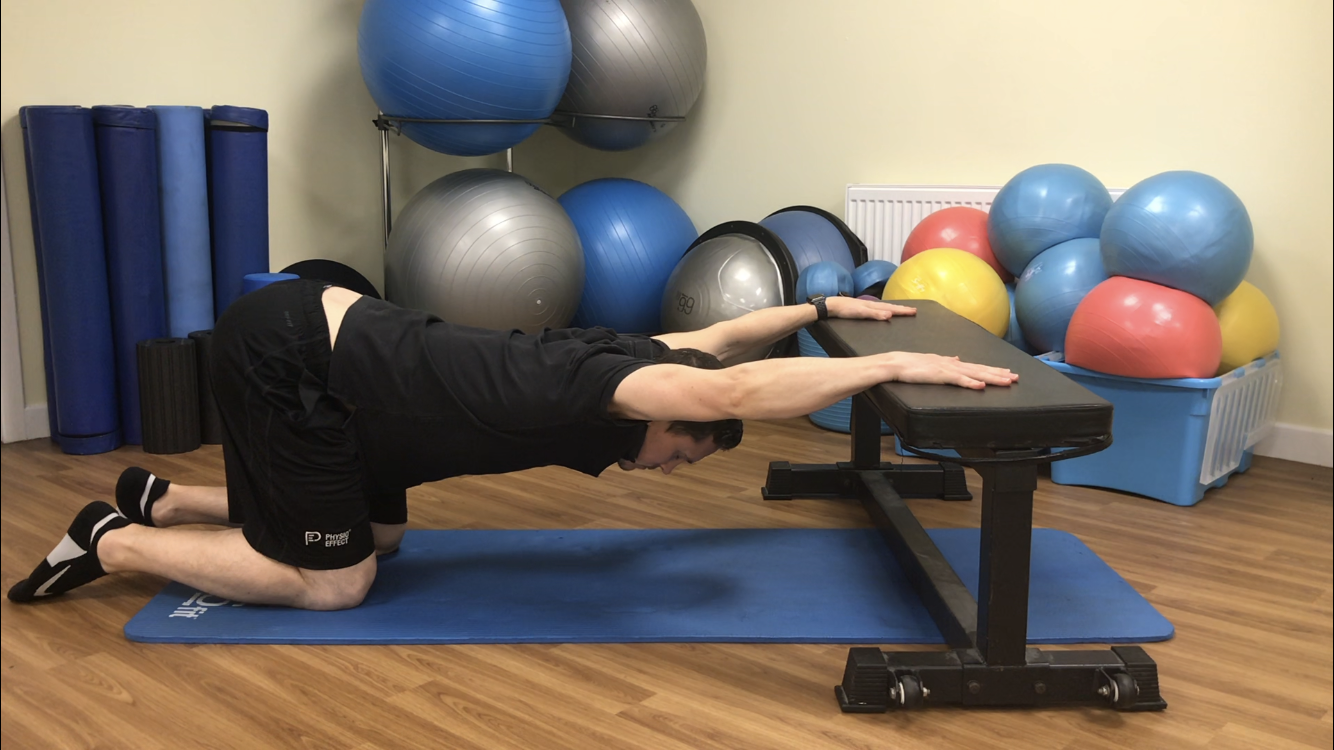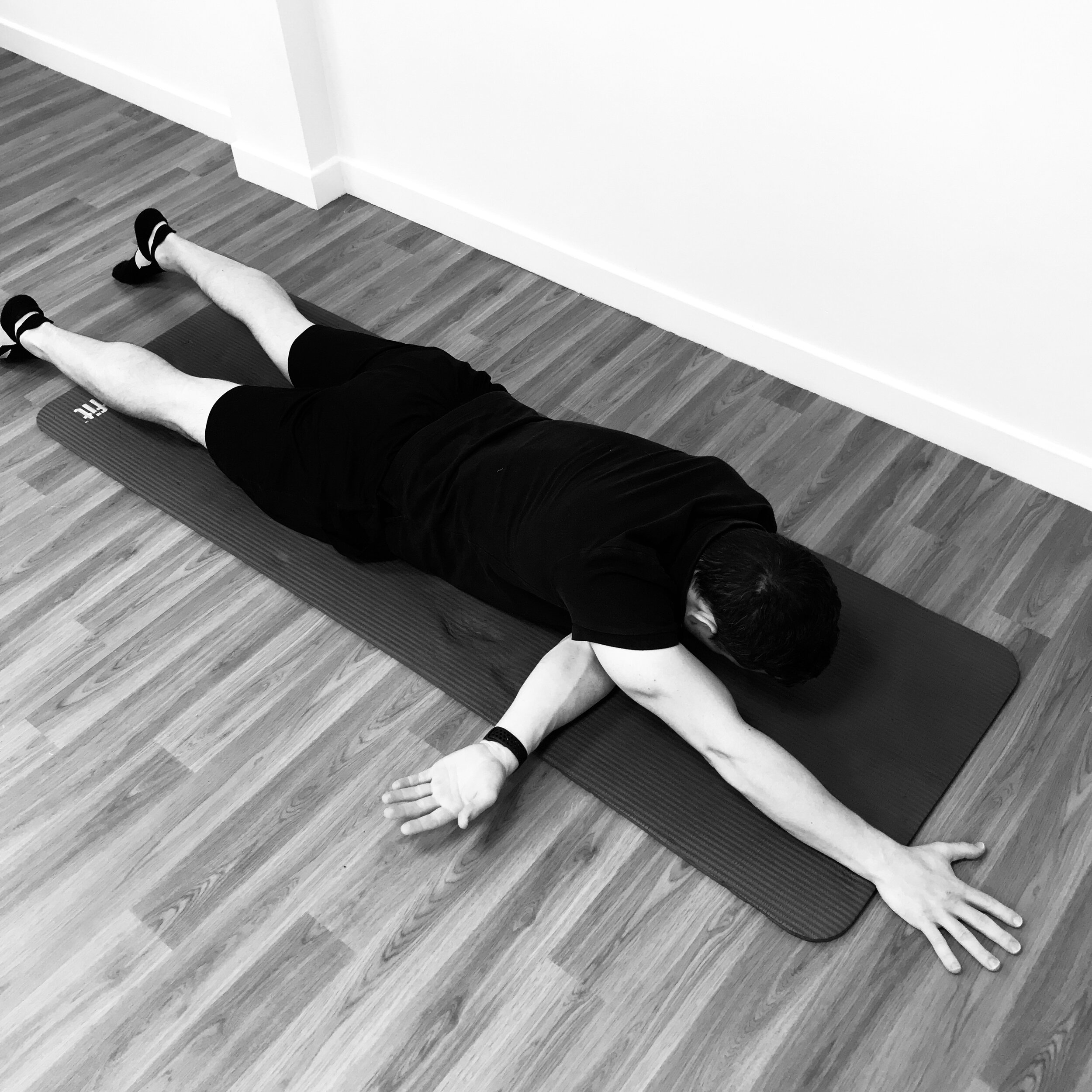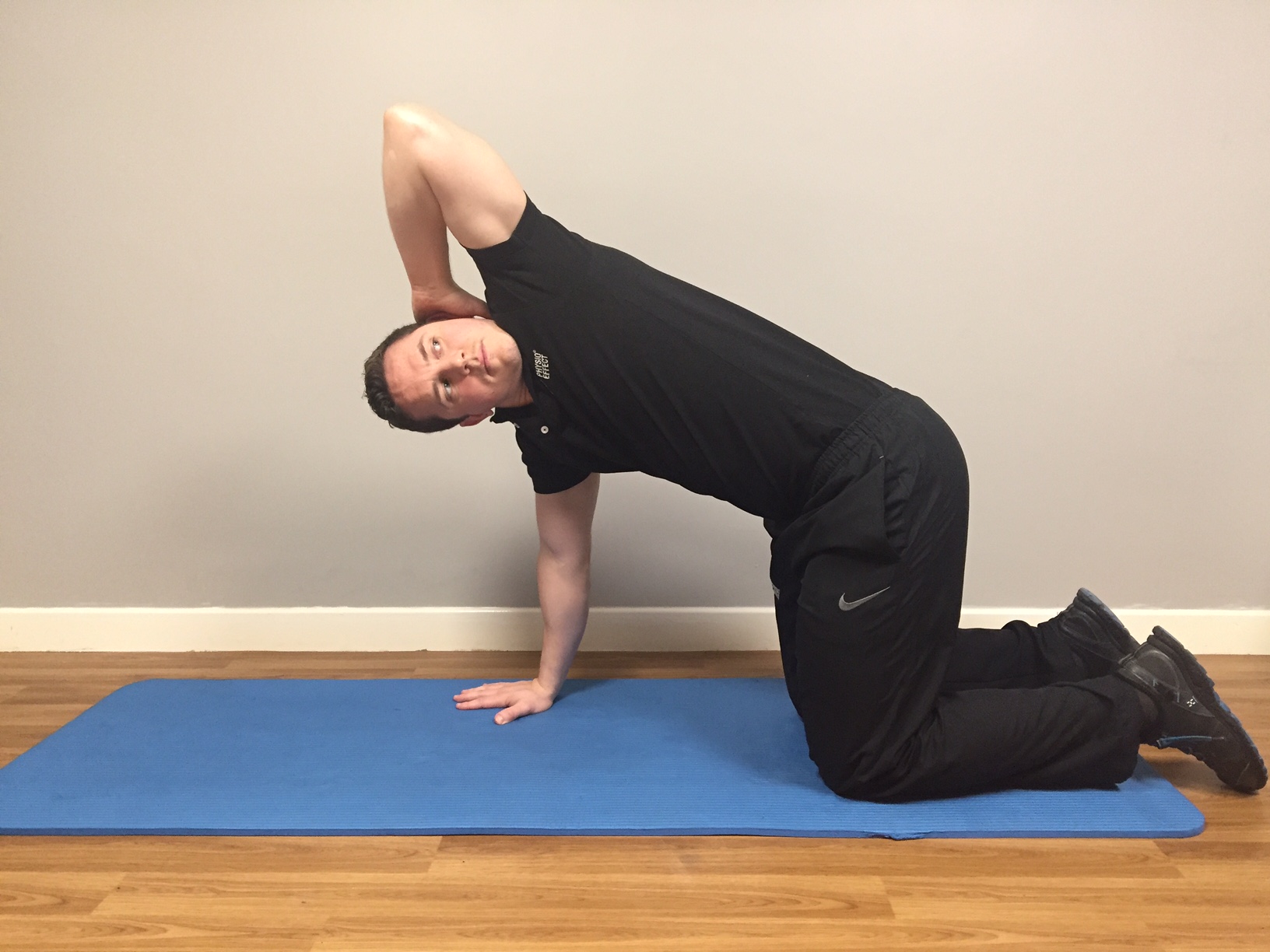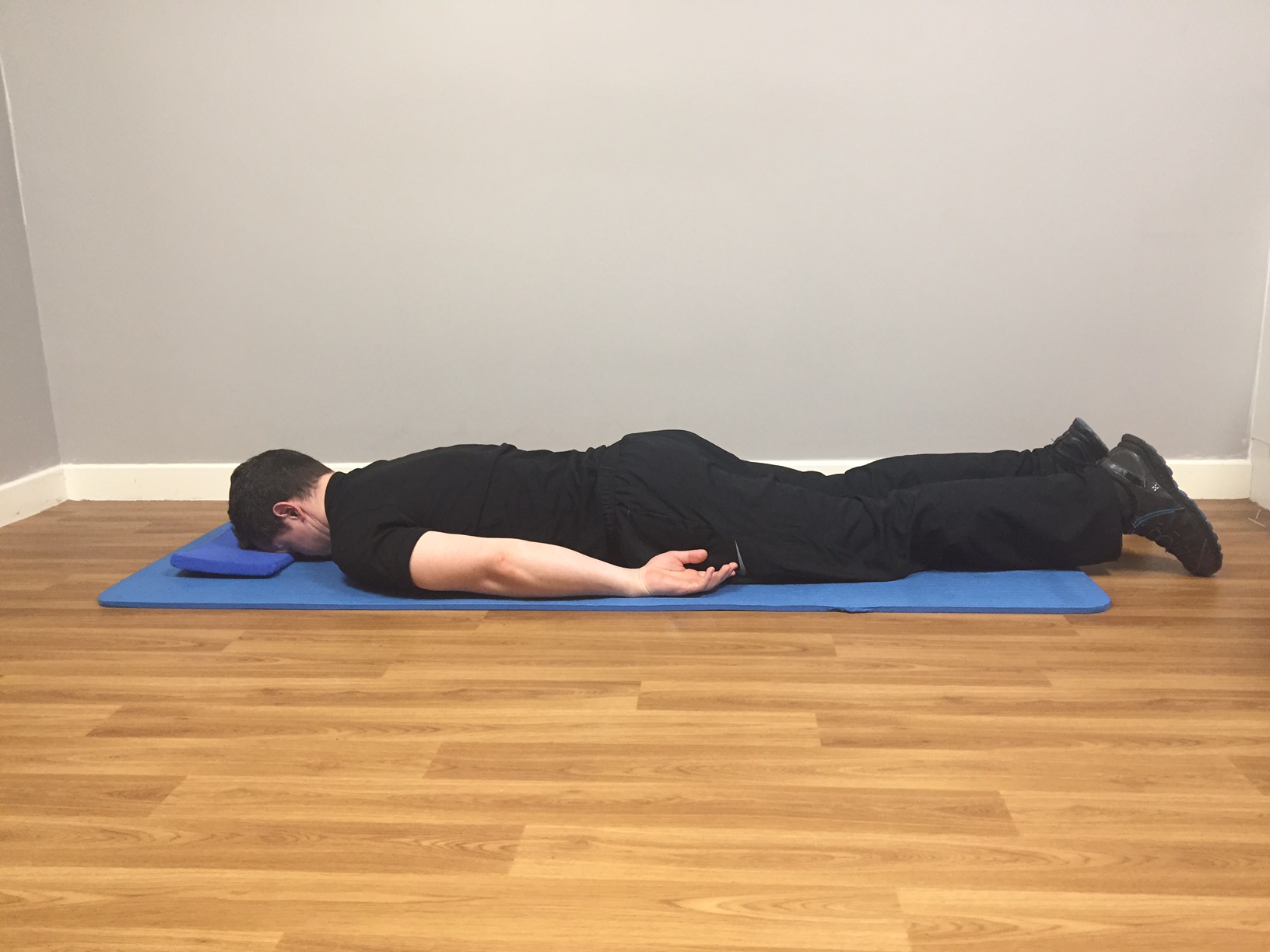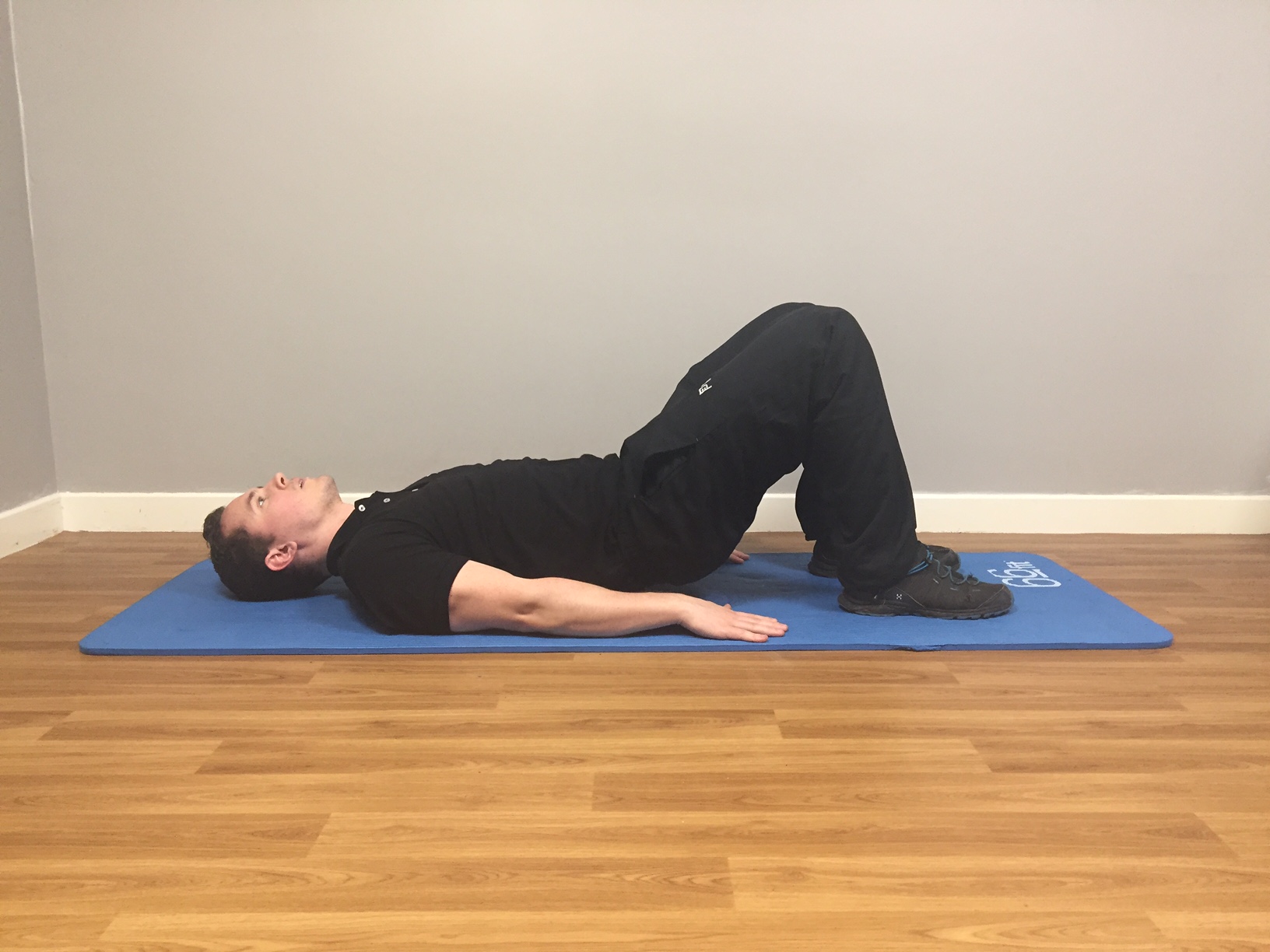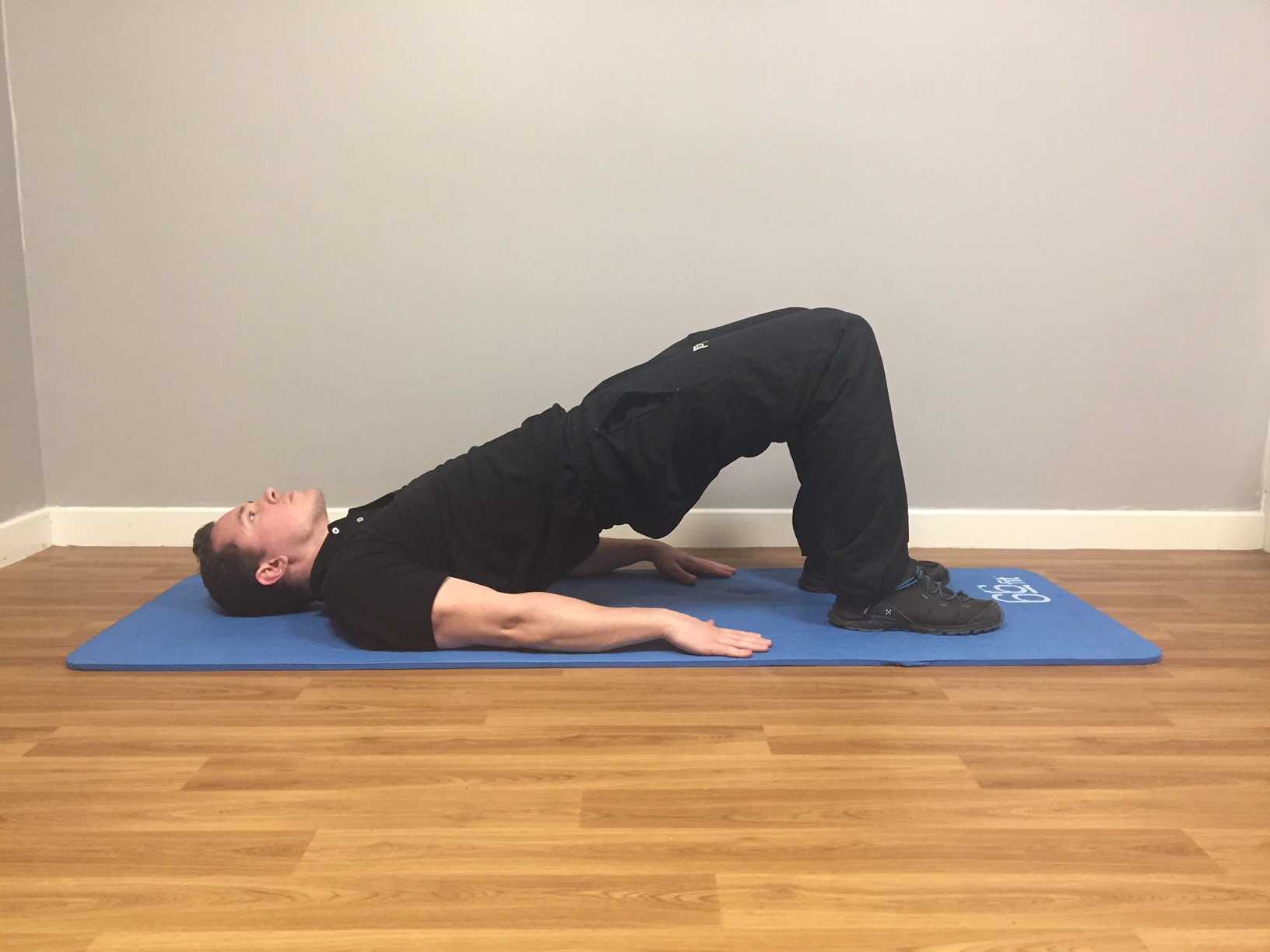Pain - Finding Relief & Taking Control
That ache in your back, the stiffness in your neck, the twinge in your knee – these are common experiences we all face from time to time. Pain is something we will all have to manage at some point in our lives. Your understanding and response to pain is crucial in optimally managing & ultimately reducing you pain
Understanding Musculoskeletal Pain: Finding Relief and Taking Control
Written By Daniel Wray (Sports Physiotherapist & Mobility Coach)
That ache in your back, the stiffness in your neck, the twinge in your knee – these are common experiences we all face from time to time. Musculoskeletal pain, affecting our muscles, bones, ligaments, nerves, and tendons, can range from a mild annoyance to a significant disruption in our daily lives.
It's natural to feel concerned when pain strikes, especially if it's intense. However, it's reassuring to know that most musculoskeletal pain, even when it feels quite severe, is not a sign of serious underlying damage or pathology. Often, it can be related to things like muscle strains, sprains, overuse, or even just prolonged awkward postures. Our bodies are resilient, and these minor issues usually resolve with time and proper care.
When Should You Seek More Urgent Investigation?
While most musculoskeletal pain is not serious, there are certain situations where it's important to seek professional medical advice promptly. Be mindful of the following:
Lower Back Pain - Can Be Crippling but Is Rarely Serious Pathology
Severe pain that comes on suddenly and unexpectedly, especially after an injury.
Pain accompanied by other symptoms like fever, unexplained weight loss, or significant weakness.
Pain that radiates down your arm or leg with numbness or tingling.
Loss of bowel or bladder control.
Pain that is constant and progressively worsening, especially at night.
A history of cancer or other serious medical conditions.
If you experience any of these "red flag" symptoms, it's always best to err on the side of caution and consult a medical professional.
Simple Daily Habits and Strategies to Reduce Pain and Cope Better:
The good news is that there's a lot you can do in your daily life to manage and reduce musculoskeletal pain. Here are a few simple strategies to incorporate:
Some key areas to manage in improving Pain Control
Stay Active: Gentle exercise, like walking, swimming, or yoga, can help strengthen muscles, improve flexibility, and reduce stiffness. Find activities you enjoy and make them a regular part of your routine.
Practice Micro-breaks and Regular Movement: If you spend long periods sitting or in the same position, incorporate short, frequent breaks to move around, stretch, and change posture. Even a minute or two of gentle movement every 30 minutes can help relieve muscle and joint tension.
Be Mindful of Movement: Pay attention to your body when you move. Avoid sudden, jerky motions and lift heavy objects correctly.
Manage Stress: Stress can often exacerbate pain. Incorporate relaxation techniques like deep breathing, meditation, or spending time in nature.
Ensure Adequate Sleep: Quality sleep is crucial for muscle repair and overall well-being. Aim for 7-9 hours of restful sleep each night.
Consider Heat and Cold Therapy: Applying heat packs can help relax tight muscles, while ice packs can reduce inflammation. Experiment to see what works best for you.
Stay Hydrated: Drinking enough water is important for overall tissue health. This will range upwards from at least 2-3 litres per day depending on your circumstances
You Don't Have to Live with Pain – Help is Available:
Professional Physiotherapy guidance can help manage and improve your pain
Living with persistent musculoskeletal pain can be frustrating and limit your ability to enjoy life. Please remember that you don't have to accept pain as a normal part of your day.
At Physio Effect, our experienced team of physiotherapists is dedicated to helping you identify the underlying causes of your pain and develop a tailored treatment plan to address your specific needs. Our skilled practitioners are experts in assessing movement patterns, muscle imbalances, and joint mechanics. We utilize a variety of effective techniques, including manual therapy, targeted exercise prescription, and comprehensive education, all designed to help you reduce pain, improve your physical function, and prevent future problems.
Taking that first step to connect with the team at Physio Effect can make a significant difference in your quality of life. We're here to listen, understand your unique situation, and guide you on your journey towards a pain-free and more active future.
Summary
In conclusion, while musculoskeletal pain is a common experience, it doesn't have to dictate your life. By understanding the common causes, recognizing when to seek further advice, and incorporating simple daily strategies, you can take proactive steps to manage and reduce discomfort. Remember that expert help is available, and the experienced team at Physio Effect is ready to provide tailored support to help you regain comfort and get back to doing what you love.
thank you
Thanks for reading, please share with any friends, family or colleagues who could benefit.
We are always here to listen & help. Our specialist team can help you navigate and manage any ache, pain or injury.
You can Use the links to Book an appointment now or Contact us with any questions
Tight shoulders? This routine will fix you up
5 step shoulder stretch routine to relieve stiffness and tension. Discover a new range of motion and rid yourself of nagging tightness in your shoulders and upper back
Why are my shoulders so tight?
Familiar Hunchback Posture?
Shoulders are a big sticking point for many of us. We constantly assess and help people with long histories of stiff, tight, achy shoulders and upper backs. More often than not there is no significant injury history but very commonly there is a base of sedentary behaviour, such as office work and driving, and a significant lack of any structured stretching or mobility exercise. Welcome to our modern lives!
Most shoulder pain can be fixed without the need for invasive surgery but it can take time to undo a lifetime of poor habits which have lead to soft tissue adaptations with weakness in some areas and tightness or stiffness in others.
1/2 Crucifix Chest Stretch
Shoulders are very mobile and we put them through a lot over our lifetime with an expectation they will be fine with no real consideration given to tuning or maintenance work. Tightness and pain can easily creep in and often presents initially as discomfort reaching overhead, pain opening a door, or a struggle to weight bear through our arms. This can develop to more constant nagging pain and stiffness and a reduced ability to perform daily tasks or enjoy physical exercise or activities.
Many people just put up with having a dodgy shoulder and accept it as a new norm but with the right guidance and exercises most situations can be at least significantly improved if not completely fixed. Like everything in life though you won’t get something for nothing and commitment to changes in habit and daily routines will be required. A balance of stretching and strengthening exercises is normally key and we have provided a great starting point here with our 5 point stretching routine.
Let’s get started!
We must bear in mind that every body is different as is each individuals unique history and circumstances so please use this routine as a guide to start improving your shoulder health and flexibility but do so carefully. Start slowly and gently and never push in to pain. Work to better your own range of motion but do not compare yourself to the video or anyone else. Practice daily and be patient but also persistent. If you can only do part of the movement or a modified / reduced range that is fine, just do what you can. Of course as with all advice please consult with a health professional if you have significant pain or loss of normal function.
Mobility Flow Video:
Exercise 1
Shoulder rolls / Scapular circles
Begin in all 4s position.Hands fixed under shoulders shrug shoulders to ears thenslide back and down and release. Then spread shoulder blades apart stretching across upper back, relax and allow shoulders and back to hollow.
Try to perform this as a slow circular rolling motion working in various directions
Perform this movement for 60 seconds
1- Shoulder shrug
2- Shoulder spread
Exercise 2
Elevated Arms to Partial Childs Pose / Prayer Stretch
Begin in all 4s position with arms straight out elevated on flat surface. Gently sit bottom back towards heels and let weight drop down between shoulder blades and through upper back
When in position try gently squeezing shoulders together and releasing and light pressing through the hands with slight twist/rotation movement
Try breathing in deeply and coming out of the stretch slightly then breathing out slowly and dropping deeper into stretch
Explore the stretch position with subtle movements and breathing for 60 seconds +
1- 4 point kneel arms elevated
2- Sit weight back and down between shoulders
Prayer Stretch (Option 2)
Perform stretch as above but move to have elbows resting on flat surface with arms positioned in ‘Prayer’ posture
Sit weight gently back and down relaxing between shoulder blades and across upper back. Try to let head bypass the bench (surface)
Try breathing in deeply and coming out of the stretch slightly then breathing out slowly and dropping deeper into stretch
Explore the stretch position with subtle movements and breathing for 60 seconds +
Prayer Stretch Start Posture
Prayer Stretch - Sit back position
Exercise 3
Shoulder Dislocates (Stick or Band)
Begin in high kneeling or standing - Holding a stick or band keep arms straight and core tight, slowly bring arms straight overhead and around down towards lower back. Allow shoulder blades to gently shrug then rotate and slide down as you circle arms overhead
Return to start point slowly ensuring not to over-arch through lower back
Repeat for 10-15 repetitions
1- Shoulder Dislocates - Stick (Overhead)
2- Shoulder Dislocates Stick (behind back)
Exercise 4
‘L’ Position Prone Shoulder Stretch
Begin lying on your front. Gently reach with shoulder to be stretched under and across your body at shoulder height with palm facing up. Allow other arm to stretch straight overhead forming an ‘L’ shape with your arms
Gently rotate into the stretch as if trying to square up shoulder blades increasing the pull/stretch felt in back of the shoulder reaching across body. Hold and release this motion for several repetitions
Work in this position for 60 seconds + on each arm
1- ‘L’ Position Shoulder Stretch Part 1
2- ‘L’ Position Shoulder Stretch Part 2
Exercise 5
1/2 Crucifix Chest Stretch
Start face down with side to be stretched arm extended fully out at shoulder height palm down. Opposite arm is bent at 90 degrees at elbow hand at shoulder height ready to push into stretch
Gently push with bent arm while rolling weight of legs over to create a strong opening stretch of the chest of the straight arm
Gently push in and out of the stretch holding for a few seconds then releasing and repeat
Explore this stretch for 60 seconds + on each arm
1- 1/2 Cucifix Start Posture
2- 1/2 Crucifix Chest Opening
Thanks for taking the time to read this guide, we hope you find it useful. Please share with anyone else who might benefit and if you have any questions comment and let us know. Don’t forget to download your free mobility cheatsheet. Good luck and enjoy your improved shoulder health.
‘L’ Position Prone Posterior Shoulder Stretch
The Tool of our Trade
A revolutionary treatment technique used in physiotherapy is the use of an instrument or a tool, which enables the physiotherapist to locate and treat an area of soft tissue dysfunction. The official term is called Instrument Assisted Soft Tissue Mobilisation or IASTM.
IASTM - What is it?
A revolutionary treatment technique used in physiotherapy is the use of an instrument or a tool, which enables the physiotherapist to locate and treat an area of soft tissue dysfunction.
The official term is called Instrument Assisted Soft Tissue Mobilisation or IASTM. The technique itself is said to have evolved from the traditional Chinese Medicine technique called Gua Sha. However, Gua Sha uses the principle of Meridians to move the bad “Qi” out of the body. You could perhaps say that IASTM is a modernised version of Gua Sha using anatomical reasoning. IASTM is growing rapidly in popularity due to its effectiveness and efficiency in treating musculoskeletal conditions while remaining non-invasive compared to other treatment techniques such as Trigger Point Dry-Needling or Acupuncture.
IASTM is performed using an ergonomically designed tool most commonly made of stainless steel. The tool is used to detect and treat fascial restrictions, effectively treat scar tissue, chronic inflammation and/or degeneration. As with any physiotherapy treatment, the use of IASTM is also supplemented with exercise prescription and additional methods such as joint mobilisation designed to correct any biomechanical issues by addressing musculoskeletal strength and muscle imbalances or weaknesses.
IASTM Tooling around the knee at Physio Effect
How Does IASTM Work?
Soft tissue injury involves damage to muscles, ligaments, tendons and fascia (connective tissue) somewhere in the body. Common soft tissue injuries usually happen after a sprain, strain or a blow to the body resulting in ruptured blood vessels or overuse of a particular body part. Soft tissue injuries can result in pain, swelling, bruising and loss of function. Adhesions within the tissue may develop as a result of repetitive strain/overuse, surgery, or immobilisation.
Often, people with soft-tissue injuries do not seek out treatment until the injuries have become chronic (weeks/months after injury). By this point, the body has completed most of its self-healing process. Scar tissue and adhesions are formed during this healing process, which limits motion and often causes pain. Scar tissue and adhesions essentially act like super glue in your body. When scar tissue is created after injury, new cells are laid down excessively and in a disorganised manner. Scar tissue/adhesions prevent the muscle or other tissues from lengthening appropriately. It is often necessary to restart the healing process in order to remodel the soft tissues in the affected area. By introducing controlled micro-trauma to affected soft tissue using IASTM, a local inflammatory response is stimulated. This micro-trauma initiates reabsorption of inappropriate or excessive scar tissue and facilitates a remodelling of the affected soft-tissue structures. After IASTM treatment, scar tissue can be remodelled so that the cells become organised in a direction that better promotes movement.
The ergonomic design of the tool used for IASTM provides the physiotherapist with the ability to locate these soft tissue restrictions and allows them to treat the affected area with the appropriate amount of pressure.
What should I expect after an IASTM treatment?
It is important to note that IASTM’s ability to reinitiate healing comes from the fact that it is essentially re-injuring the body (although to a lesser degree and in a controlled manner). This may cause mild discomfort during the procedure. There may be soreness in the treatment area for a day or two following treatment and occasionally bruising may occur.
What are common conditions treated with IASTM?
Tennis or Golfer’s Elbow
Neck or Back Pain
Plantar Fascitis
Rotator Cuff , Achilles or Patella Tendinopathy
DeQuervain’s Tensosynovitis
Post-Surgical Scars
Ligament Sprains
Muscle Strains
IT Band Syndrome
Shin Splints
Chronic Ankle Sprains/Stiff Ankle
Arthritic Pain
What are the benefits following IASTM?
Improved range of motion
Improved muscle strength and function
Altered pain perception and reduction of pain
IASTM is a common treatment technique utilised by the therapists at Physio Effect. The dedicated team at Physio Effect provides a full package of services that will ensure you’re supported through injury prevention, assessment, recovery and helping you achieve your ultimate performance goals.
Back Strengthening Exercises for Desk-Based Workers
Let one of our Physios, Danny Wray, take you through a set of exercises which will help to strengthen your back and hips and that help counteract the negative effects of sitting.
At Physio Effect we routinely treat the general population for injuries and pain which can be attributed to a sedentary lifestyle. We have previously discussed the risks posed by excessive hours of sitting and how this is reaching almost epidemic levels in the Western world. Today's article provides some general exercise recommendations that can go some way to reducing this risk and counteracting the negative effects of sitting.
In an ideal world, those of us who have sedentary or sitting based occupations should aim to move, stretch, and be active for at least 1-2 minutes of every hour. While some of the exercises shown here may not be suitable for your particular work environment, any effort to perform a routine of this nature for 5-10 minutes before or after work or during a lunch break would go a long way to reducing the risk of pain and injury. General exercise and safe varied movement of any kind is also highly recommended.
Exercise 1 - Thoracic Rotation
Thoracic Rotation Start
Start on all fours with one hand placed behind your head.
Slowly turn the elbow towards the ceiling allowing your trunk to rotate and stretch
Hold at top position for 3-5 seconds. Repeat x 10 with each arm
Thoracic Rotation Finish
Exercise 2 - Dart
Dart - Start Position
Lay face down with thin pillow or folded towel for head support
Arms by your side, gently stretch your fingertips away from your shoulders allowing your shoulder blades to glide downward and slightly inward
Palms facing your hips, have your arms floating just off your side and not touching the floor
Keeping the back of your neck long and eyes looking to the floor, gently lift your head and upper body just off the floor - imagine lifting from your breast bone
Hold the finish position 3-5 seconds. Repeat 10 times 1-2 sets
Dart - Finish Position
Dart - Finish - Detail
Exercise 3 - Hip Flexor Stretch
Hip Flexor Stretch Start Position
Take a kneeling / lunge position as shown - use support of wall or furniture for balance if required
On the kneeling side gently engage your buttock and lower abdominal muscles - imagine you are tucking your tailbone in between your legs
You should feel a stretch at the front of your hip/ thigh. If balance allows gently raise the arm on the same side as the kneeling knee.
Hold the stretch for 30 seconds minimum and repeat 2-3 times each side.
Hip Flexor Stretch Finish Position
Exercise 4 - Cobra
Cobra Start Position
Lay face down with hands palms down about shoulder height
Using your arms slowly press out peeling your upper body slowly off the floor
Remain heavy in your hips trying to keep them in contact with the floor - relax your buttock muscles
Hold the finish position for 5-10 seconds, return to the start and repeat 5-10 times
Cobra Finish Position
Exercise 5 - Shoulder Bridge
Shoulder Bridge Start Position
Lay flat on your back with feet shoulder width apart and knees bent
Using your lower abdominals gently tilt your pelvis to press your lower back flat to the floor
Pressing through your heels, using your buttock and abdominal muscles gently peel your spine up from the floor starting with your tail bone.
Finish with your weight resting across your shoulder blades and your shoulders, hips and knees in a diagonal line
Hold finish position for 3-5 seconds, return to start and repeat 10 times for 2-3 sets.
Shoulder Bridge Finish Position
Exercise 6 - Superman
Superman Start Position
Start in all fours position with knees under hips, hands under shoulders and spine relaxed
Slowly extend out opposite arm and leg pointing the toes behind and the fingertips to the front
Keep gentle tension in your lower abdominals - think about drawing your bellybutton in towards your spine
Try to maintain spinal position throughout the movement, return slowly to start position
Repeat with opposite arm and leg, try 10-12 repetitions for 2-3 sets.
Superman Finish Position
Exercise 7 - Thoracic Extension with Foam Roller
Thoracic Extension with Foam Roller Start Position
Lying on your back with knees bent and feet flat, place a foam roller under your mid-upper back as shown
Take a deep breath in and then, as you exhale, slowly extend back over the roller to stretch your back. Try to keep your lower abdominals engaged to avoid over-arching your lower back
Support your head with your hands and be careful to stay relaxed in your neck. If you find this too intense or uncomfortable, try using a pillow or pillows to rest back onto
Hold the finish position for 2-3 breath cycles, return to start position and repeat 5 times
Move the roller to another position in your mid-upper back and repeat the process, aim to work on 3-5 positions along your spine
Thoracic Extension with Foam Roller Finish Position
Thoracic Extension with Foam Roller Alternate Finish Position
Exercise 8 - Pec Stretch
Pec Stretch Start Position
Stand as shown with arm at approximately shoulder height and palm to forearm placed against the doorframe
Slowly turn your body away by stepping your feet around to open and stretch the front of your chest and shoulder
Lean gently into the stretch, keeping your neck relaxed, hold for 30 seconds+, repeat x 2 on each side
Alternatively, use a doorway to position both arms in the stretch position, step forward to feel the chest and shoulder open and stretch. Hold 30 seconds+, repeat x 2.
Double Pec Stretch Position
While these are general exercise recommendations suitable for the majority of the population they are not prescriptive for any specific pain or injury. These exercises should be performed slowly and gently in a range of movement suited to your own level of ability and flexibility. The exercises should not cause any pain and we recommend that if you are in any doubt or if you are suffering from spinal or joint pain issues you should consult a healthcare professional for advice.
At Physio Effect we provide a wide range of services allowing us to not only treat your pain or injury but ensure that you are given the best advice specific to your individual needs to prevent your problem from recurring.
#KnowledgeShare – Shoulders Month – Rotator Cuff
We see a lot of clients coming to us with shoulder injuries – sometimes it’s not what they think! In this new video, Danny gives us a the basics (and a bit more!) on the rotator cuff!
23rd February 2017
We see a lot of clients coming to us with shoulder injuries – sometimes it’s not what they think! In this new video, Danny gives us a the basics (and a bit more!) on the rotator cuff!
#KnowledgeShare – Shoulders Month – Mobility Exercises
Physio Effect physiotherapist Jonny Kilpatrick demonstrates some exercises to improve overhead range of movement using small equipment you’ll find in your gym
Here's Jonny from a few years ago demonstrating some exercises to improve overhead range of movement using small equipment you'll find in your gym


